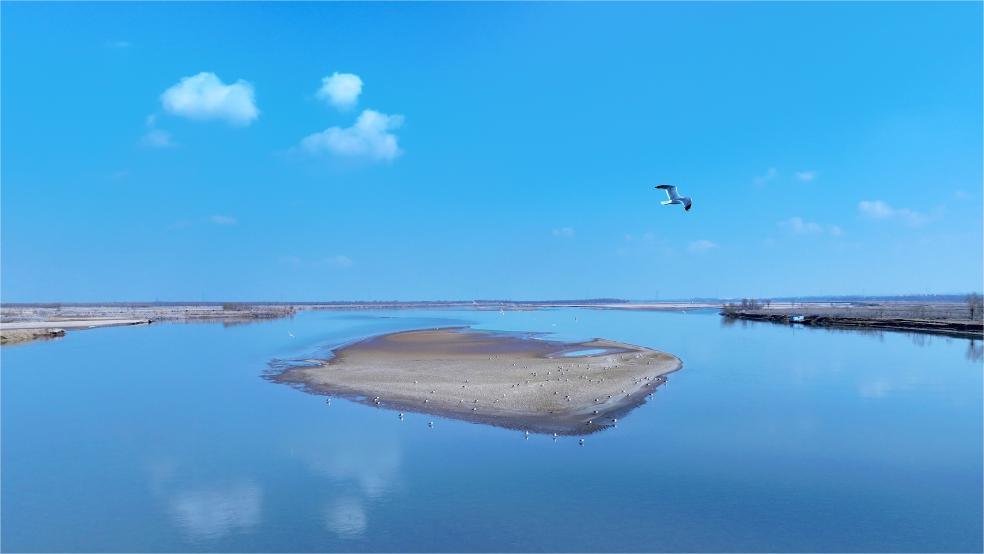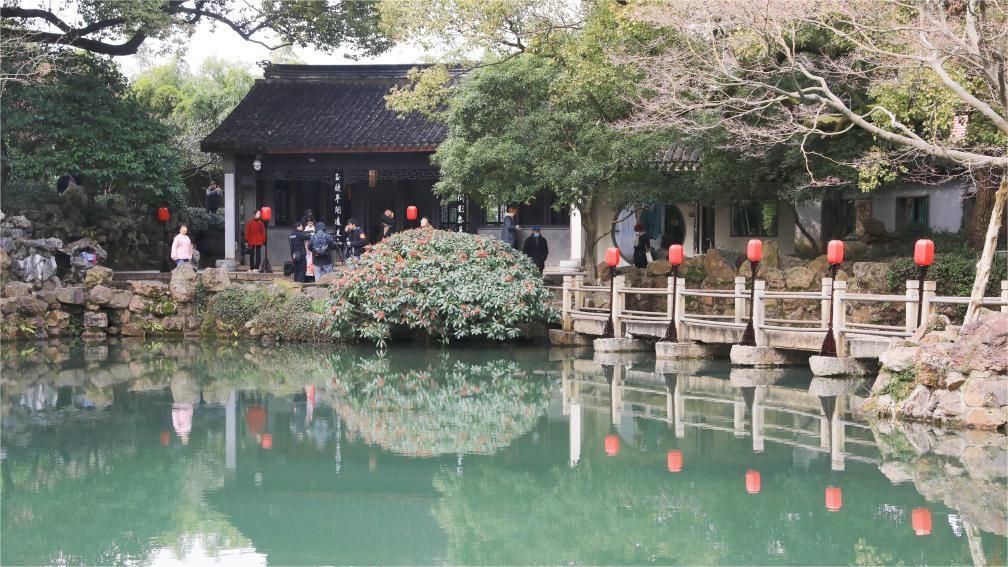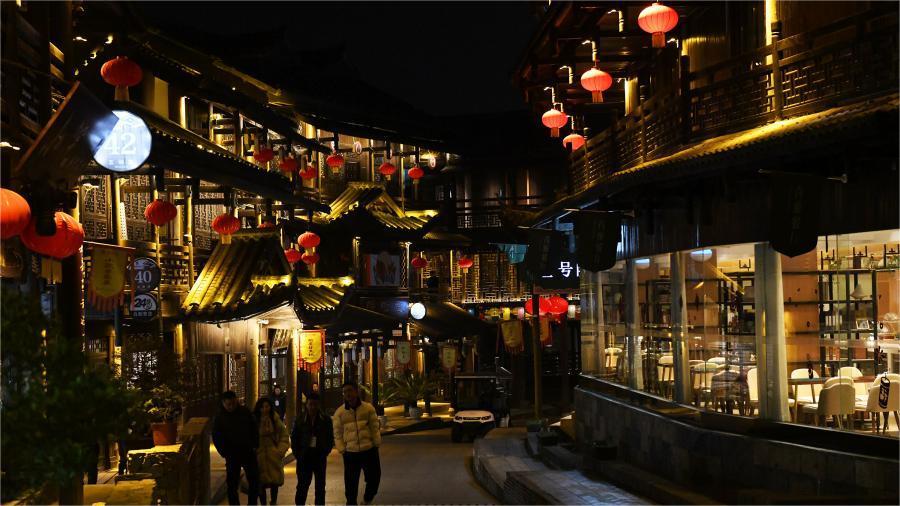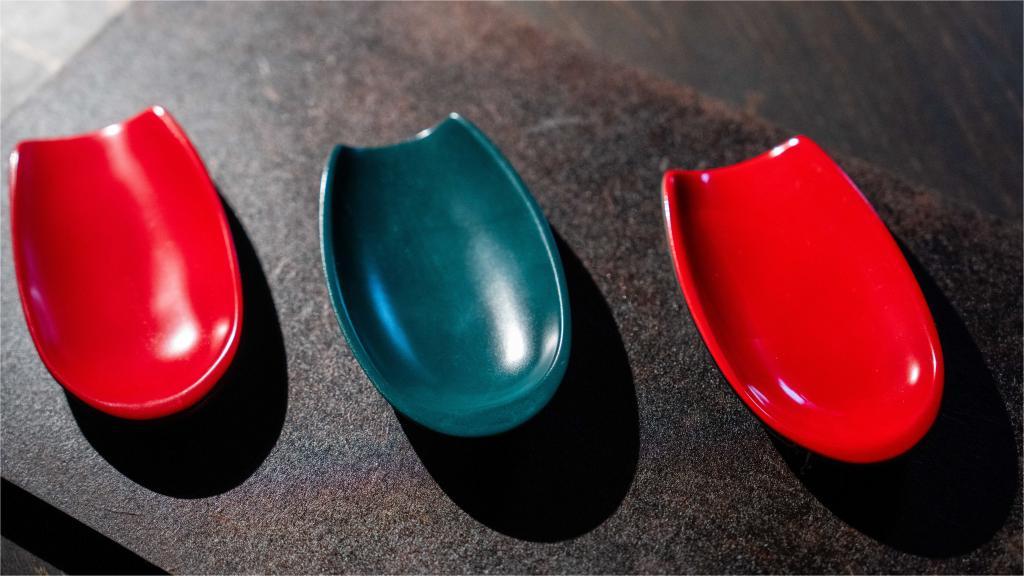China's "porcelain capital" attracts migratory foreign designers
NANCHANG, March 6 (Xinhua) -- With masterful precision, Allan Denis Naymark breathed life into the shapeless clay on his potter's wheel. As he worked his magic, a teapot emerged, ready to be decorated with his signature algae pattern.
After finishing his work, the 33-year-old American left Jingdezhen for Hainan for a winter vacation. "I will be back to the studio in Jingdezhen and restart my work there in April."
Jingdezhen, a city in east China's Jiangxi Province, is known as the world-famous "porcelain capital." Its history of ceramic craftsmanship spans over 2,000 years.
Naymark came to Jingdezhen nine years ago from New York. "I found the origin of ceramic culture here," he said. The city inspired him to start his career as a ceramics designer.
He gave himself the Chinese name Ni Deming. The Chinese character "Ni," which is pronounced similar to the "Nay" in his name, means clay, the main component in ceramics.
In a village on the outskirts of Jingdezhen, Naymark owns a studio in a former farm house. He is in good company as there are more than 200 such studios in the vicinity.
Driven by a passion for ceramics, more than 30,000 people have migrated to Jingdezhen, a city with a population of less than 900,000, in recent years. During the peak period, there is one foreigner among every six migrants.
The foreigners, which come from around 60 countries and regions, are compared to migratory birds, as they flock to Jingdezhen annually. Some even stay longer.
"This year we have already got a record of more than 1,000 foreign artists applying for on-site work here," said Wu Hao, head of Taoxichuan International Art Center.
The center has run the three-month Taoxichuan Art Center Residency Program every year since 2015, inviting art institutions of over 50 countries and regions to recommend artists to join the program. All expenses are covered; the only request is that each artist should leave one third of the work.
The recent decade has witnessed over 3,000 "migratory" artists working at Wu's international art center. Some even come every year.
Ceramicists are attracted to the porcelain hub for its ceramic culture, while the city's industrial chain of handmade porcelain allows them to enter the market at low cost.
According to a Dutch designer who only gave his name as Johannes, a porcelain mould that would sell 2,000 euros in the Netherlands cost just one eightieth of the price in Jingdezhen. "From ceramic clay, glaze, tools to kilning, I can handle everything simply by making a phone call here," he said.
"You can innovate boldly thanks to the more inclusive market here," said Japanese ceramist Takayanagi Ayao, adding bowls made in Jingdezhen have richer color and sells at a higher price.
Livestreaming has also helped boost the sales of porcelain in Jingdezhen. There are over 10,000 livestream hosts engaged in the ceramics industry. According to the local government, last year the sales of porcelain via livestreaming exceeded 7 billion yuan (about 985.54 million U.S. dollars), accounting for almost 70 percent of China's e-commerce market share in ceramics industry.
Yoo Si-hyoung, a ceramist from the Republic of Korea who has lived in Jingdezhen for eight years, said that Jingdezhen enables people to translate creations into reality with good sales.
Naymark told Xinhua that although he lives in a relatively remote area, he has seen more and more foreigners in recent years, including sculptors and historians from countries like Italy, Egypt and Russia. Locals, already used to seeing outsiders, are happy to talk with any newcomers about ceramics and local cuisine.
Apart from designing ceramics, Naymark also enjoys the slow life there, drinking tea, admiring porcelain, hiking, and visiting the Changjiang river, which passes through the city.
He said that he loved the ubiquitous artistic atmosphere and the warm, delicate, and free living environment of Jingdezhen. "I will continue working and living here," he said.
Photos
Related Stories
- Trending in China | Linglong porcelain
- In pics: Artisans craft Ru porcelain artworks to mark Year of the Dragon
- Exhibition of porcelain artworks from China's Jingdezhen kicks off in Paris
- Pic story: inheritor of Honglyucai porcelain
- High-speed railway puts millennia-old "porcelain capital" on faster development track
- Craftsman dedicated to modern porcelain painting in Jingdezhen
Copyright © 2024 People's Daily Online. All Rights Reserved.









